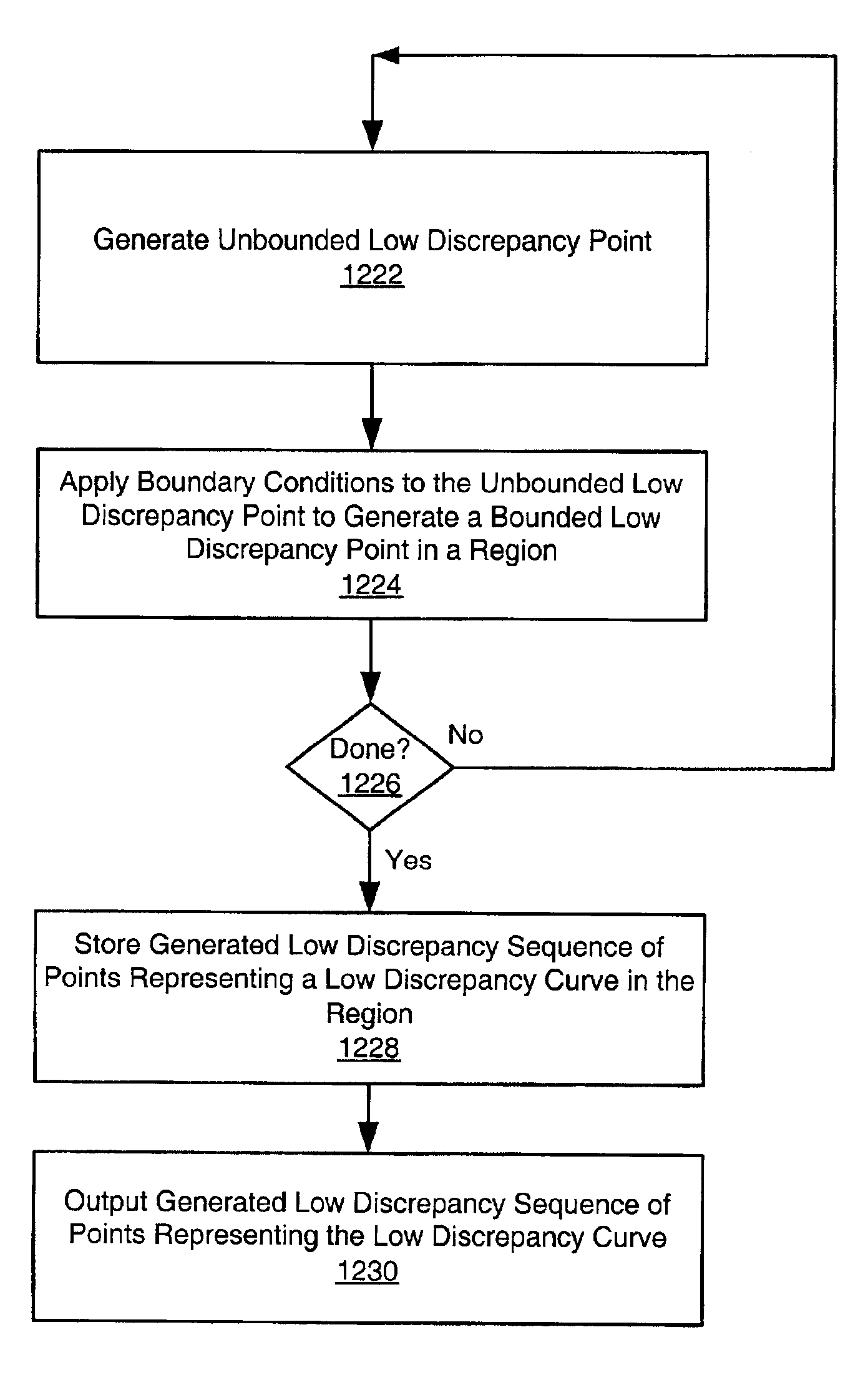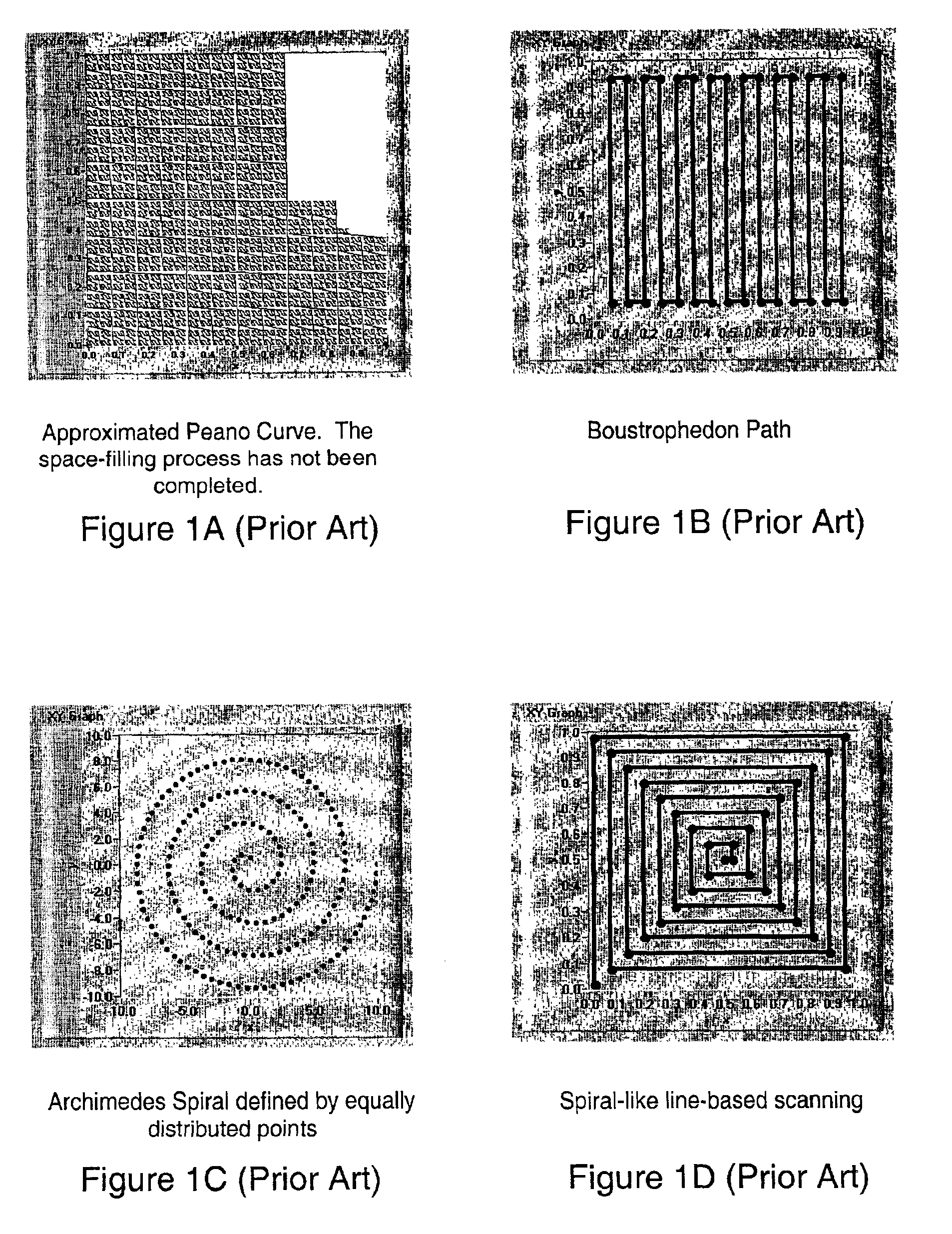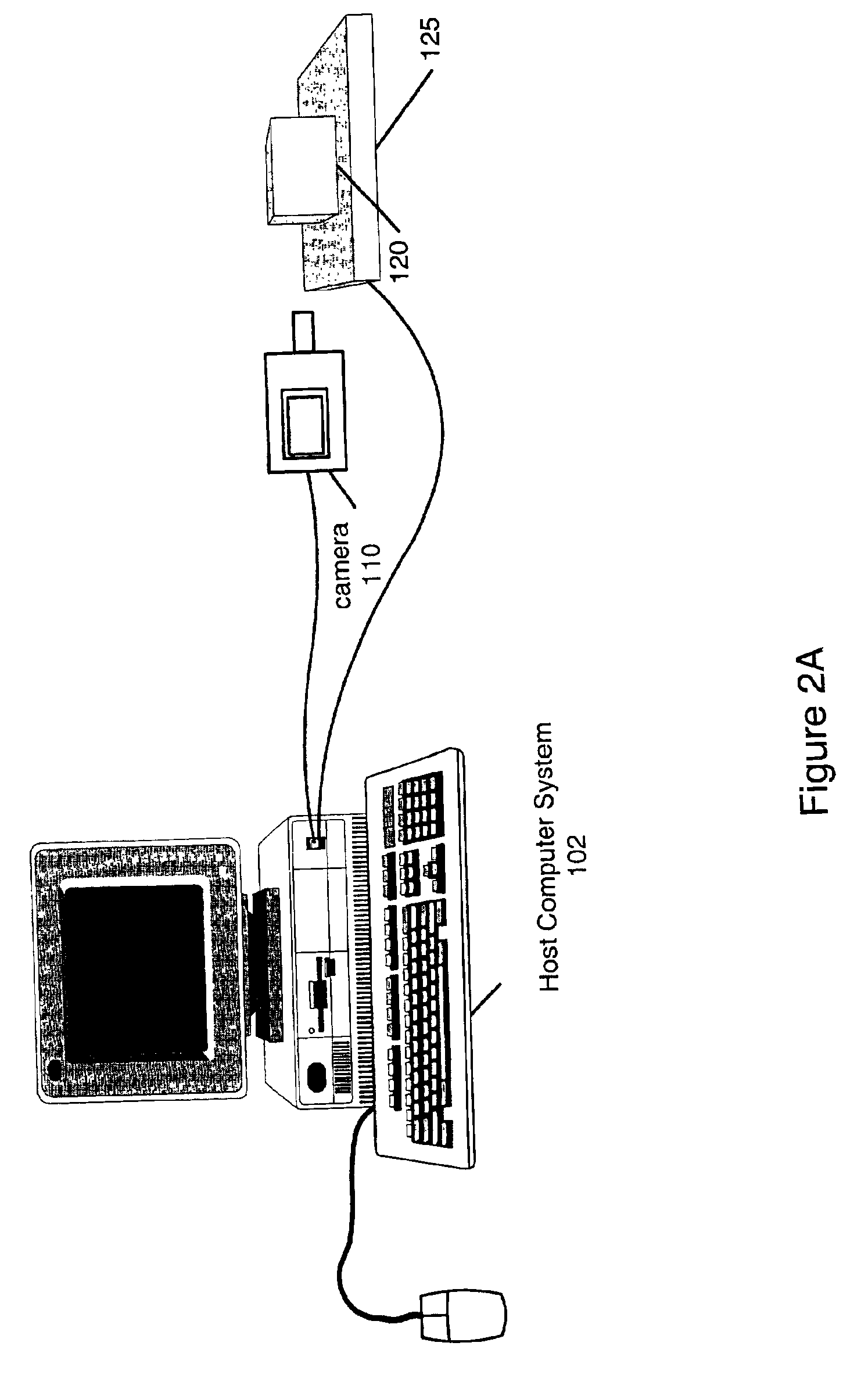System and method for generating a low discrepancy curve in a region
a discrepancy curve and region technology, applied in the field of data acquisition, can solve the problems of not being generally applicable, affecting and the structure is generally inappropriate for real scanning scenarios, and achieve the effect of confirming the accuracy of the calculated location
- Summary
- Abstract
- Description
- Claims
- Application Information
AI Technical Summary
Benefits of technology
Problems solved by technology
Method used
Image
Examples
examples
FIGS. 15A-15C—Surface Scans with Low Discrepancy Curves
[0318]Theorem 4 and Theorem 5 can be used to construct low-discrepancy curves lying on surfaces, various examples of which are given below.
Unit Cube
[0319]Given the surface of a unit cube, FIG. 15A shows a tiling of the whole plane with the following property. Whenever two elements of the tiling have an edge in common the same is true for the corresponding faces of the unit cube. The tiling follows the torus-scheme underlying Theorem 4. According to this theorem almost all α=(α1, α2) generate curves lying on the surface of the unit cube that are low-discrepancy in the sense of Definition 1.
[0320]Note that in the example shown in FIG. 15A, some paths possible on the cube are not possible (with a continuous straight curve) on the tiled surface. For example, faces 3 and 5 of the cube (left) are adjacent, while in the tiled version of the surface (right), they are not. More generally, it may be seen that on the tiled surface, each fa...
PUM
 Login to View More
Login to View More Abstract
Description
Claims
Application Information
 Login to View More
Login to View More - R&D
- Intellectual Property
- Life Sciences
- Materials
- Tech Scout
- Unparalleled Data Quality
- Higher Quality Content
- 60% Fewer Hallucinations
Browse by: Latest US Patents, China's latest patents, Technical Efficacy Thesaurus, Application Domain, Technology Topic, Popular Technical Reports.
© 2025 PatSnap. All rights reserved.Legal|Privacy policy|Modern Slavery Act Transparency Statement|Sitemap|About US| Contact US: help@patsnap.com



